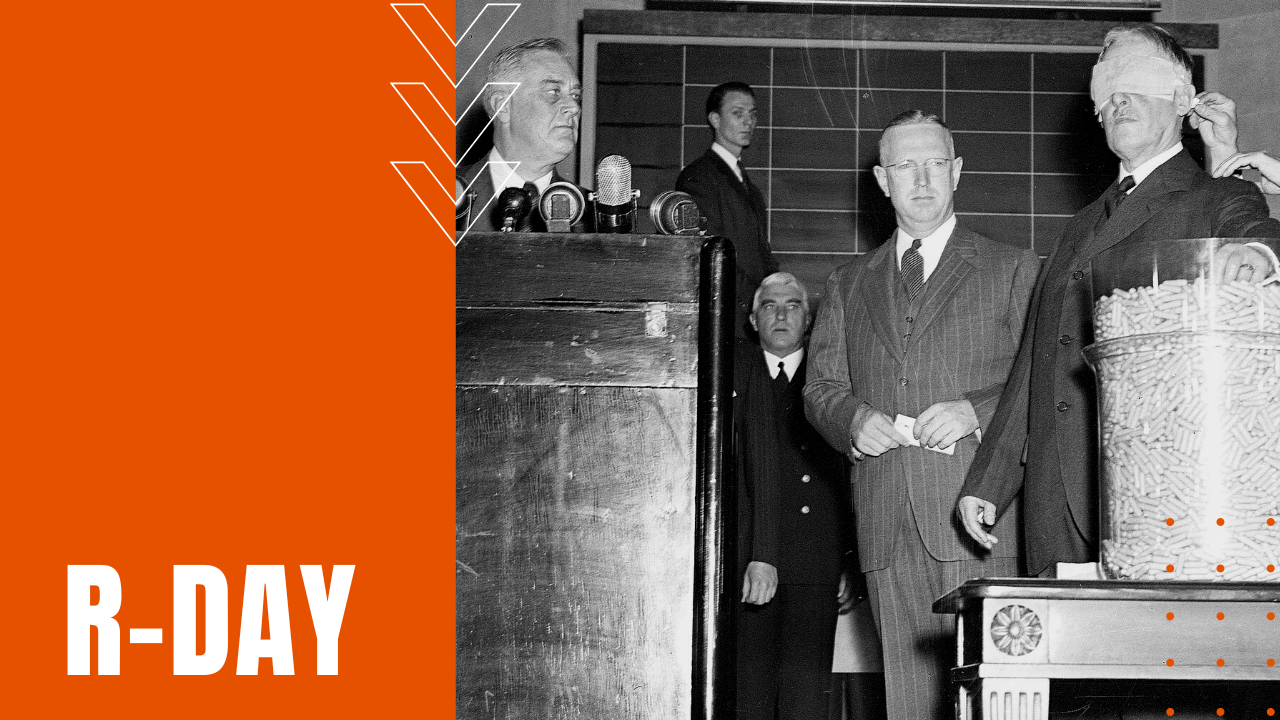R Day: FDRs Conscription Ahead of WWII

After Hitler’s 1939 invasion of Poland and the Nazi’s subsequent blitzkrieg invasions across Europe, an American nation once divided over the issue of isolationism versus intervention began to realize that the later was inevitable given the clear good against evil reflection of unprovoked Axis aggression.
America’s First Peacetime Draft
As a result, on October 16th, 1940, all American men between the ages of 21 and 35 were required to register for the nation’s first peacetime selective service draft on what became known as R-Day.
The level of patriotic cooperation became instantly notable, as rich and poor, famous and unheralded lined up as one at registration centers across the nation. 113,000 men queued up at 47 registration centers in the District of Columbia, despite the misery of pounding cold rain.
Half a million queued in Chicago, where examiners asked each man a dozen questions, noting a registrant’s build as slender, medium or stout, while recording a registrants race as White, Negro, Oriental, Indian or Filipino.
Each man was handed a wallet-sized draft card that quickly became a form of valid identification as a man’s legal or illegal status for the purchase of alcohol.
Even The Famous Register to Fight
Journalists followed the registration of famous actors, athletes and financiers, including John Wayne, Henry Fonda, Don Ameche and heavyweight boxing champion Joe Louis, who made the front page of most national newspapers the following day under the caption, “He’s a fighter for you, Uncle Sam.”
As the day wore on, 500 World War One veterans delivered a 10-gallon fishbowl into Philadelphia’s Independence Hall—the same one used during the World War One draft of 1919—where a blindfolded Secretary of War Henry Stimson pulled celluloid capsules from the fishbowl before handing them one-by-one to FDR.
The first number drawn was 158, and while many American men were drafted into the military with each successive lottery draw, the lingering effects of the Great Depression witnessed more than 71,000 unemployed American men volunteer for military service during the early weeks of the draft, hoping for training in future careers ranging from cooks to mechanics to pilots, making Registration Day, a defining step towards America’s eventual entry into the Second World War.
